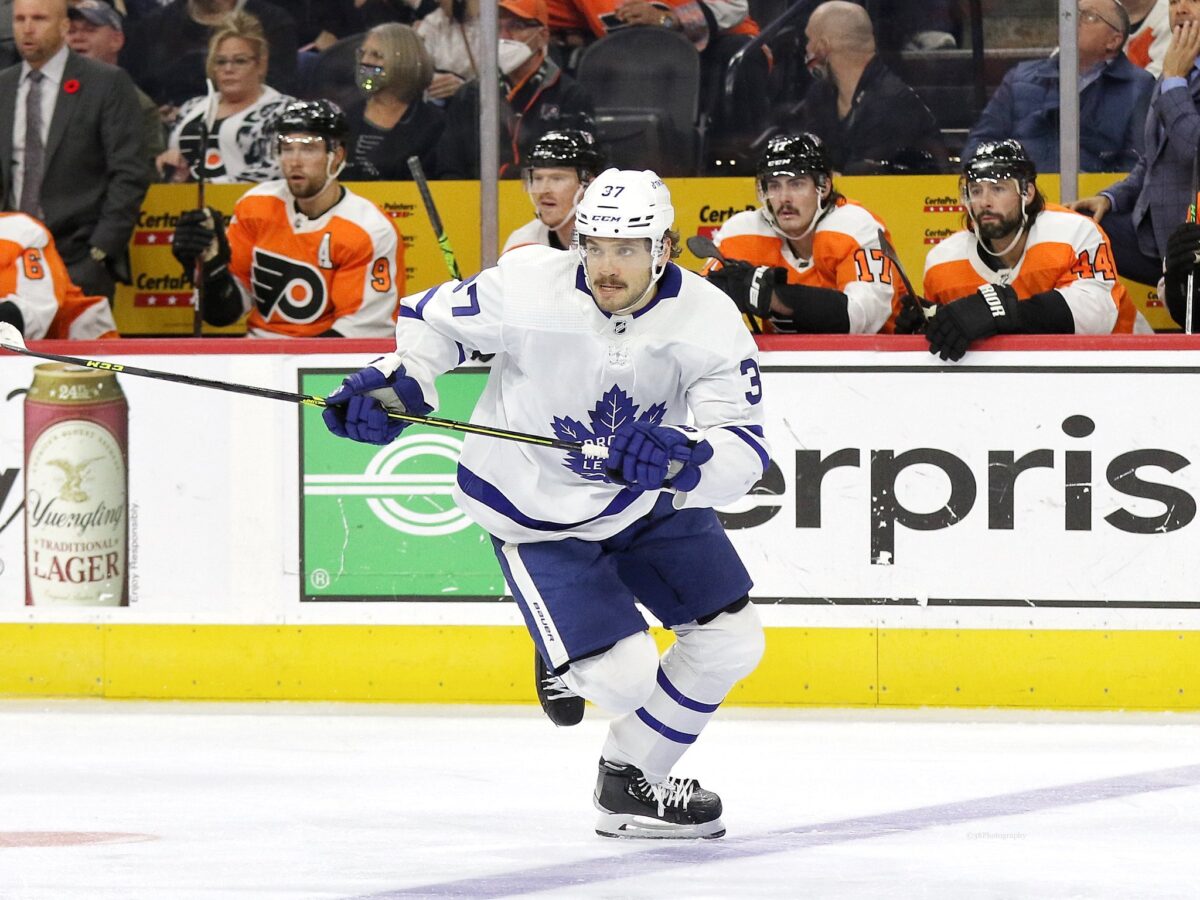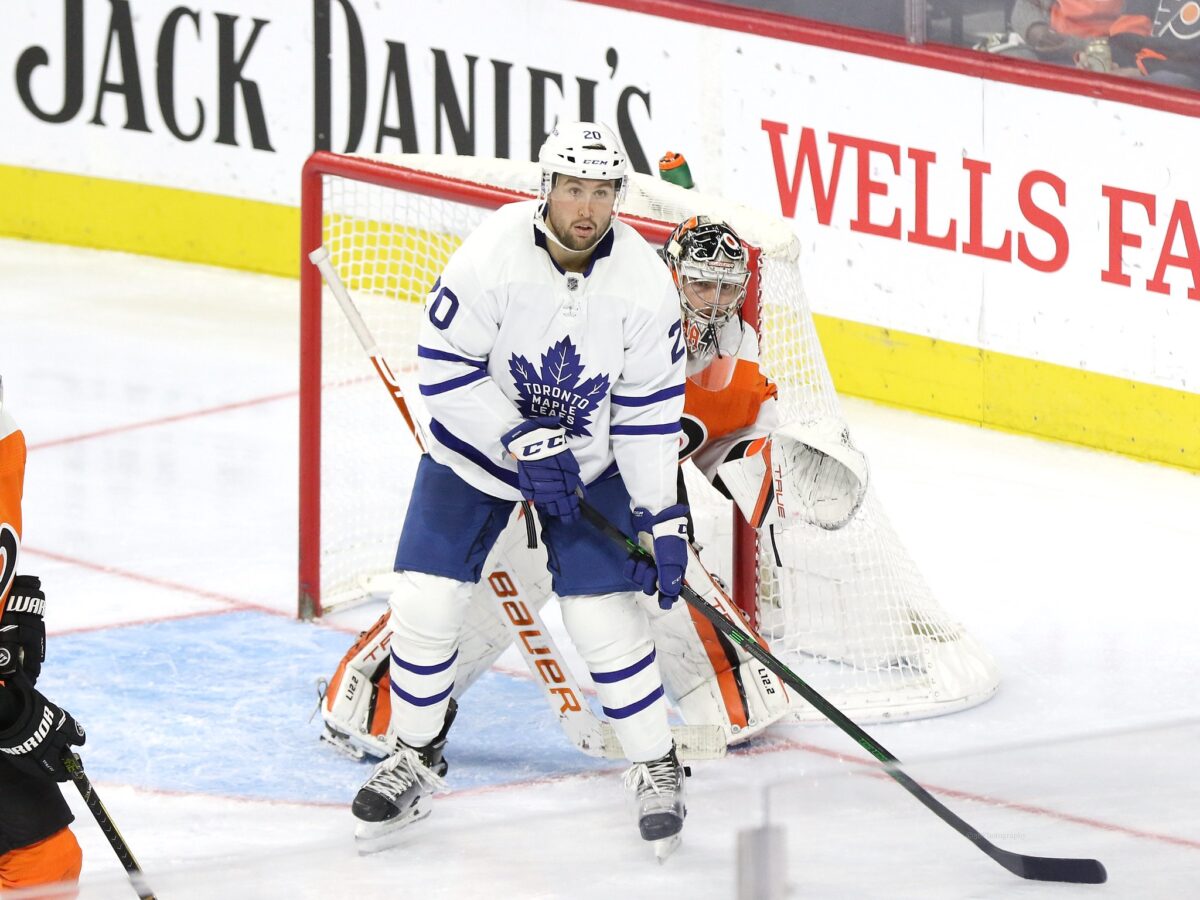Along with the postponed games and the positive Covid cases over Christmas and New Year, the Toronto Maple Leafs have had a significant event happen. Mitch Marner and Rasmus Sandin have both recovered from their injuries, and the two of them returned to the lineup Saturday in the 6-0 win over the Ottawa Senators. Today, the Maple Leafs await news about Auston Matthews who tested positive yesterday on a rapid test.
Related: Removing the Toronto Maple Leafs From the Cup – Personal Thoughts
While Sandin was just on IR (injury reserve) and not LTIR (long-term injury reserve) his salary still counted against the cap. Marner’s case was different. He was on LTIR, so his $10.9 million salary-cap hit was not counting against the cap. Now that he’s healthy, it is.

What that means for the Maple Leafs is, after everyone is removed from the Covid Protocol list, and if all of their roster players are healthy, they will have 13 forwards with a cap hit of $54,750,616; seven defensemen with a cap hit of $20,882,500; two goalies at $5,450,000 and Phil Kessel’s retained salary of $1.2 million. That gives the team a 22-player roster with a total cap hit of $82,283,116, or $783,116 over the $81,500,000 cap limit.
The way we see it, the Maple Leafs have two options, if and when that happens.
Option #1: Move a Player Who’s Waiver Exempt
The Maple Leafs have two players who are waiver exempt. These players can be removed from the roster and sent to the AHL, be it in actuality or just on paper. One player is Timothy Liljegren, who carries a salary-cap hit of $863,333; the other is Rasmus Sandin, whose salary-cap hit is $894.167.
Related: Ranking NHL Team Logos
Option #1 would be to rotate each of these players in and out of the lineup for the remainder of the season, or until someone who makes more than the $783,116 salary-cap overage gets injured badly enough to go on LTIR.
Positives of Option #1
By having Liljegren and Sandin rotate in and out of the lineup, it leaves the team with the depth of one extra forward. That extra forward could be used in case of an injury or rotated in and out of the lineup for back-to-back games. And, given the number of games that have been postponed, there will likely be more back-to-back games on the horizon. Option #1 carries no risks of losing a player on waivers.
Negatives of Option #1
The negatives of yo-yoing the two young Swedish defensemen back and forth between the Marlies are mainly that both Sandin and Liljegren need to play as much as possible. They’re part of the long-term future of this team.
Even at their young ages (Liljegren is 22 and Sandin is 21) and with their lack of experience (Liljegren has only 32 games and Sandin has played 68 games), they are challenging both Justin Holl and Travis Dermott on the depth chart. Missing games as healthy scratches doesn’t help either of them.
Option #2: Trade or Waive a Player Who Has a Big-Enough Salary-Cap Hit
The second option would be to trade or place a player that has a salary-cap hit of at least $783,116 on waivers for the purpose of sending that player to the AHL’s Toronto Marlies.

Positives with Option #2
The positives for Option #2 is that both Sandin and Liljegren remain in the lineup, which gives Maple Leafs’ head coach Sheldon Keefe more options on defense. If he feels Sandin or Liljegren are outplaying Holl or Dermott, he can move the two more veteran defensemen in and out of the lineup as needed. Option #2 would allow both Liljegren and Sandin to play the maximum number of games they possibly can.
Negatives with Option #2
At this point of the season, and with the Maple Leafs where they are in the standings, if they placed anyone from their present roster on waivers, they would most likely lose them to another team. If players like Michael Amadio, Travis Boyd, and Jimmy Vesey were claimed by other teams when they were placed on waivers during past seasons, surely anyone presently on their roster would be claimed.
Related: Eric Lindros Trade Revisited
The only gambit the team might make would be to place Nick Ritchie on waivers. Given Ritchie’s poor season thus far, would anyone pick him up? And, if another team did, would the Maple Leafs mind? The answer to that question would be whether the organization has given up on Ritchie altogether and believes he would be un-tradable.

If the Maple Leafs were to trade a player, unless that player carried a higher salary, they would not be able to take back a roster player. They would have to get futures, such as draft picks or prospects – players who would not help them this season. If they did that, the team would be removing a current roster player from their forward depth chart.
What Move Would General Manager Kyle Dubas Make?
It’s hard to think like Maple Leafs’ general manager Kyle Dubas for two reasons. First, he and his team seem to know the rules inside and out. That knowledge offers him options most regular fans – including us – haven’t imagined. Second, like him or not, he’s a genius when it comes to creating paths through the deep salary-cap woods that few could have imagined.
Related: Meeting Maple Leafs’ Greats: Our Readers Share Their Stories
Not all of Dubas’ moves work out well, but he continues to find ways to get his team out of tight salary-cap spots. That said, we wonder which option fans might take? Or, is there another option we haven’t thought of that might be a better option? Let us know in the discussion section.
[Note: I want to thank long-time Maple Leafs’ fan Stan Smith for collaborating with me on this post. Stan’s Facebook profile can be found here.]
You may also like:
- Maple Leafs Should Keep Murray as Third Goaltender
- Flames & Maple Leafs Trade History Revisited
- 3 Players the Maple Leafs Could Target on a PTO
- NHL Rumors: Oilers, Maple Leafs, Capitals, Kuznetsov News
- Maple Leafs Should Target Evgeny Kuznetsov as Reclamation Project
